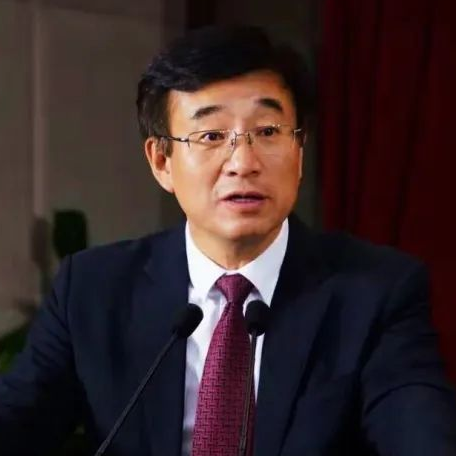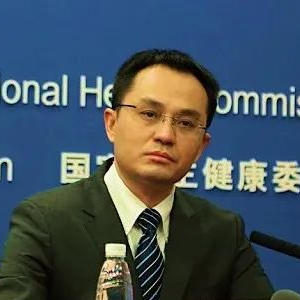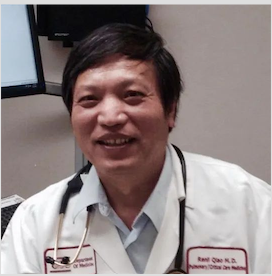主办人
美国胸科医师学会
中华医学会呼吸病学分会
中国医师学会呼吸医师分会
支持
中华人民共和国驻洛杉矶总领事馆
演讲人与题目
(英文讲座)
1、王辰院士:武汉抗疫布局-方舱医院与全面控制感染

Chen Wang, MD and PhD, President of the Chinese Academy of Medical Sciences and Peking Union Medical College, President of CACP, Honorary President of CTS.
Dr. Wang is stationed in Wuhan for the COVID-19 epidemic and is still there. He invented the idea of Fangcang Shelter Hospital which is the crucial step that has brought the disastrous epidemic in Wuhan under control.
2、瞿介明教授:城市协调抗疫-上海的成功经验是怎么实现的

Jieming Qu, MD. Professor of Department of PCCM in Ruijin Hospital in Shanghai. President of Chinese Thoracic Society. Dr Qu developed his career in pulmonary infections and is one of the experts in the action against covid—19 in Shanghai . Shanghai, a metropolitan with population of 22 million, was expected to be the second disaster area but ended up with only 400 cases and 4 deaths.
3、曹彬教授:抗病毒药物的探索

Bin Cao, MD, PhD. Vice President of China-Japan Hospital, executive chief of the National Center for Respiratory Diseases in Beijing. Dr. Cao was among the first batch of medical professionals stationed in Wuhan to support the crushing healthcare system in the city. He is the PI of several major clinical trials for anti-viral agents including remdesivir and Kaletra.
4、詹庆元教授:新冠危重情况的预测与管理

Qingyuan Zhan, MD. Chief of Medical ICU, China-Japan Hospital in Beijing. Chair of Critical Care Committee, Chinese Association of Chest Physicians. Dr. Zhan is a leading expert in the field of Critical Care Medicine, especially in ECMO use. During the epidemic, he has stationed in Wuhan and in the designated hospital receiving the sickest group of COVID-19 cases. He is still in Wuhan.
主持人

Stephanie Levine, MD, FCCP, Professor of Medicine in Pulmonary Diseases and Critical Care Medicine at the University of Texas in San Antonio, Texas. CHEST President
组织者

Renli Qiao, MD, Ph.D., FCCP. Professor of Clinical Medicine. pulmonary, critical care, University of Southern California ; Medical director, international affairs, American College of Chest Physicians
Nicki Augustyn, CAE. Publisher and Senior Vice President for Marketing, Communications, and Publishing, Chest Headquarter, Chicago
直播时间
第一场:3/30/2020(周一)21:00-22:30(北京时间)
1、武汉抗疫布局-方舱医院与全面控制感染源(Fangcang Shelter hospitals – strategic control of the entire infection source in Wuhan.)王辰院士
2、上海市协调抗疫-上海的成功经验是怎么实现的(Suppress the peak of the curve in Shanghai – strategy for city-wide defense.)瞿介明教授
第二场:3/31/2020(周二)21:00-22:30(北京时间)
1、抗病毒药物的探索(Looking for cure – summarizing the important clinical trials.)曹彬教授
2、新冠危重情况的预测与管理(Beyond life support – prediction and management of critical cases.)詹庆元教授
直播链接:

介绍
Toward the end of 2019, the COVID-19 epidemic originated in Wuhan, China. Within less than a month, the Wuhan medical system was overwhelmed and the entire metropolitan population of 11 million fell into chaos.
The Chinese government responded by recruiting 42,000 medical professionals from all over the country and dispatched them to Wuhan to take over. The collapsing mess was quickly turned into an organized counterattack and the epidemic was brought to under control by mid-March. During the early phase, >3000 medical professionals were infected, yet since February, zero infection was achieved due to the strict isolation measures.
Unfortunately, the epidemic exploded into a pandemic and spread to the entire world. Many countries are facing the terrible situation similar to Wuhan before February. Thus, the experience that helped China conquer the epidemic is the most important and timely knowledge for the rest of the world right now.
Some fundamental principles have been developed that determine the Chinese victory against the epidemic and can be summarized below. We will have the opportunity to hear from the frontline leaders themselves.
1) City wide isolation by establishing designated hospitals;
2) Temporary sub-medical facilities that can admit asymptomatic and mildly symptomatic patients to achieve strict control of the entire infectious sources;
3) Quarantine sites (using hotels) for suspected cases.
4) Emergence Leadership groups that are given administrative power bypassing bureaucracy to directly carry out actions at institution, city, province/state, and national levels.
5) Strict and detailed protocols for each step in the management of COVID-19 patients and protection of medical staffs.
根据美国约翰斯·霍普金斯大学的统计,截至当地时间29日下午17点,美国新冠肺炎确诊感染病例共136880例,死亡2409例。


